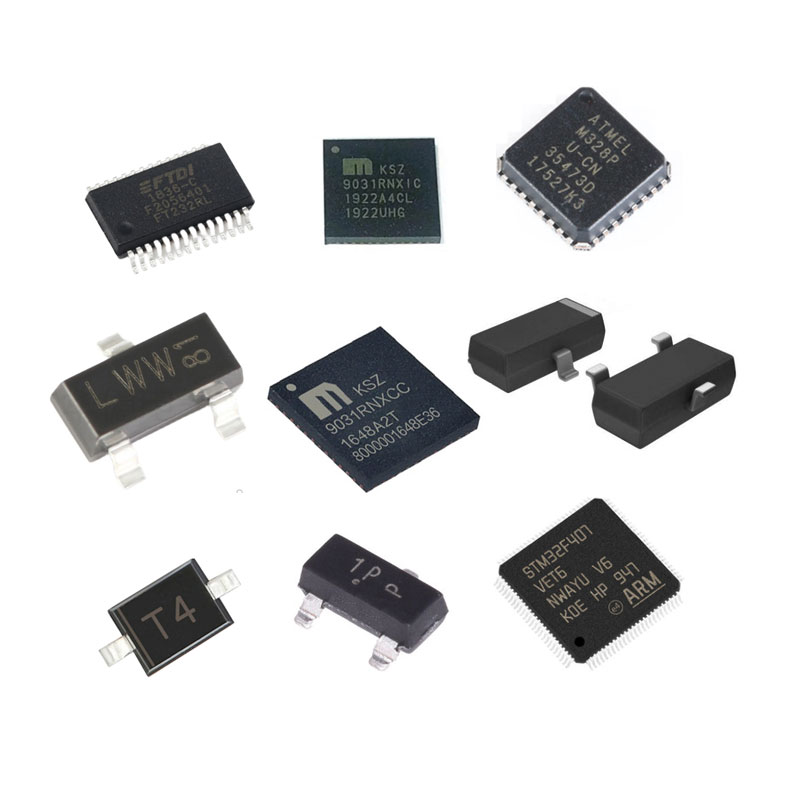
In electronic equipment, the chip is one of the core components, and its performance and stability directly affect the operation of the entire system. However, during production and use, chips may be damaged due to various internal and external factors. This article will delve into some common causes of chip damage and propose corresponding prevention and solution measures.
1. Physical damage:
Mechanical stress during the manufacturing process: During the manufacturing, packaging, transportation or installation process, the chip may be subject to mechanical stress such as collision, drop or extrusion, resulting in damage or breakage of the internal structure.
Thermal stress in the welding process: High temperatures during welding may cause the performance of the internal components of the chip to deteriorate, uneven melting of the solder balls, or cracks, which may lead to poor contact or short circuit problems.
Preventive measures: Strictly abide by the chip operating procedures, improve the level of production automation to reduce human errors; adopt appropriate welding temperature curves and optimize the welding process to reduce the impact of thermal shock on the chip.
2. Electrostatic discharge (ESD) damage:
During handling or assembly, electrostatic energy carried by the human body or tools is released onto the chip, which may cause breakdown of sensitive components or damage to the oxide layer, resulting in functional failure.
Preventive measures: Establish a complete ESD protection system, including wearing an anti-static bracelet, using an anti-static workbench and tools, and ensuring that all operations that touch the chip are performed in a well-grounded environment.
3. Overvoltage/current surge:
Under abnormal working conditions, such as power supply fluctuations, signal abnormalities, or sudden changes in the external environment, the chip may withstand voltage or current exceeding the design limit, causing internal transistors to burn out or other components to be damaged.
Preventive measures: Enhance system-level protection design, such as adding voltage regulators, transient voltage suppressors (TVS), current-limiting circuits and other protection components, and consider reasonable margins in application design to deal with extreme situations.
4. Thermal stress damage:
Long-term overheating will accelerate the aging of the internal materials of the chip, affect the threshold voltage of the transistor, and even cause problems such as migration of the metal interconnection layer and rupture of the oxide layer.
Preventive measures: Reasonably design the heat dissipation system to ensure that the chip operates within a safe operating temperature range; select a packaging form suitable for working conditions to improve heat dissipation efficiency; regularly maintain equipment, monitor and adjust workloads, and avoid long-term full-load operation.
5. Radiation damage:
Radiation environment (such as cosmic rays, nuclear radiation, etc.) will affect chip semiconductor materials, leading to single particle effects, total dose effects, etc., causing chip performance degradation or failure.
Preventive measures: For specific application scenarios, select dedicated chips with radiation-resistant reinforcement design; take shielding measures to reduce the impact of radiation on the chip; improve system robustness through redundant design, error detection and correction technology.
In summary, understanding and effectively preventing the above common causes of chip damage is of great significance to extending the service life of the chip and ensuring stable operation of the equipment. Chip manufacturers, system integrators and end users should work together to comprehensively improve the reliability and durability of chips starting from design, manufacturing, use and other aspects.
Eurotech is a worldwide supplier and exporter of electronic components, specializing in ICs, LCDs, Memory, Chips, computer parts, networking equipments and other passive components.
Tel: (86) 755 83952292
E-mail: info@eurotech-ic.com